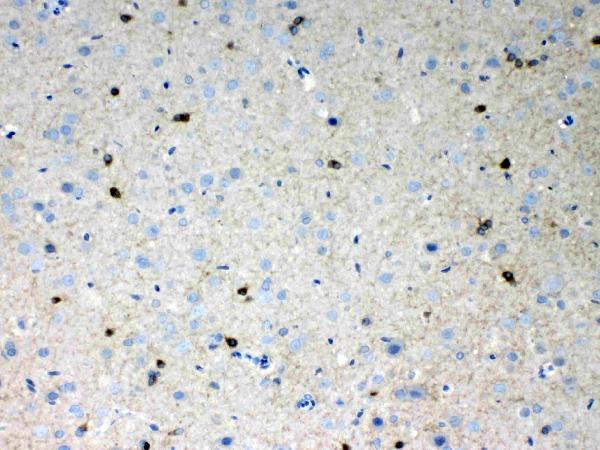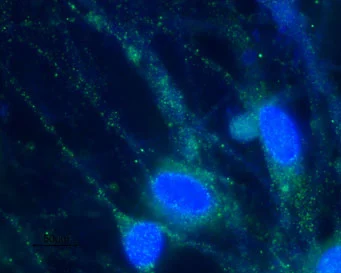
Figure 2. IHC analysis of HCN2 using anti-HCN2 antibody (A02804). HCN2 was detected in paraffin-embedded section of rat brain tissues. Heat mediated antigen retrieval was performed in citrate buffer (pH6, epitope retrieval solution) for 20 mins. The tissue section was blocked with 10% goat serum. The tissue section was then incubated with 1microg/ml rabbit anti-HCN2 Antibody (A02804) overnight at 4°C. Biotinylated goat anti-rabbit IgG was used as secondary antibody and incubated for 30 minutes at 37°C. The tissue section was developed using Strepavidin-Biotin-Complex (SABC)(Catalog # SA1022) with DAB as the chromogen.
Anti-HCN2 Antibody Picoband(r)
A02804
ApplicationsWestern Blot, ImmunoHistoChemistry
Product group Antibodies
TargetHCN2
Overview
- SupplierBoster Bio
- Product NameAnti-HCN2 Antibody
- Delivery Days Customer9
- Application Supplier NoteTested Species: In-house tested species with positive results. Predicted Species: Species predicted to be fit for the product based on sequence similarities. By Heat: Boiling the paraffin sections in 10mM citrate buffer, pH6.0, for 20mins is required for the staining of formalin/paraffin sections. Other applications have not been tested. Optimal dilutions should be determined by end users.
- ApplicationsWestern Blot, ImmunoHistoChemistry
- Applications SupplierWB, IHP, IHC
- CertificationResearch Use Only
- ClonalityPolyclonal
- Concentration500 ug/ml
- Gene ID610
- Target nameHCN2
- Target descriptionhyperpolarization activated cyclic nucleotide gated potassium and sodium channel 2
- Target synonymsBCNG2; BCNG-2; brain cyclic nucleotide-gated channel 2; EIG17; FEB2; GEFSP11; HAC-1; hyperpolarization activated cyclic nucleotide gated potassium channel 2; potassium/sodium hyperpolarization-activated cyclic nucleotide-gated channel 2
- HostRabbit
- IsotypeIgG
- Protein IDQ9UL51
- Protein NamePotassium/sodium hyperpolarization-activated cyclic nucleotide-gated channel 2
- Scientific DescriptionBoster Bio Anti-HCN2 Antibody Picoband® catalog # A02804. Tested in IHC, WB applications. This antibody reacts with Human, Mouse, Rat. The brand Picoband indicates this is a premium antibody that guarantees superior quality, high affinity, and strong signals with minimal background in Western blot applications. Only our best-performing antibodies are designated as Picoband, ensuring unmatched performance.
- Reactivity SupplierMouse, Rat,Human
- Storage Instruction-20°C,2°C to 8°C
- UNSPSC12352203
References
- The HCN domain is required for HCN channel cell-surface expression and couples voltage- and cAMP-dependent gating mechanisms.Read more
- Spironolactone diminishes spontaneous ventricular premature beats by reducing HCN4 protein expression in rats with myocardial infarction.Read more
- Dynamic changes in HCN2, HCN4, KCNE1, and KCNE2 expression in ventricular cells from acute myocardial infarction rat hearts.Read more





